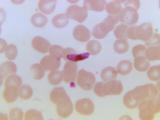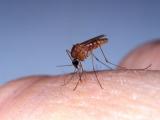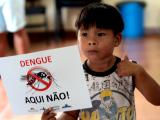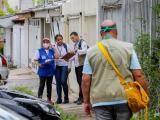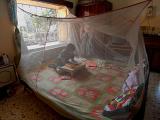Jun 3, 2010
CDC finds dengue information gap in US travelers
An investigation into a cluster of dengue fever infections in a US missionary group that volunteered in the Dominican Republic in early 2008 has revealed gaping knowledge gaps about the disease and its prevention in travelers to dengue-endemic areas, the CDC reported today in Morbidity and Mortality Weekly Report (MMWR). The cluster included 14 of 33 missionaries from Iowa and Minnesota who returned with dengue symptoms after helping assist with reconstruction after tropical storm Olga. Twelve had positive dengue IgM test results. After interviewing 13 of the patients, investigators learned that none wore long pants in the evening, and only three used mosquito repellent, even though it was available in their supplies. None were aware that mosquitoes in the Dominican Republic posed a health threat. Only three said they had heard of dengue illness. Only two had visited a healthcare provider or travel clinic before their trip, where they did not receive any information about dengue. None reported that trip coordinators or residents of the host country warned them about dengue. One of the group had learned of malaria and the importance of mosquito repellent and protective clothing use. The CDC said similar clusters are likely in the future in traveling volunteers and that dengue this year became a nationally notifiable disease. The CDC said it has launched new efforts to target disease and prevention resources to aid groups. It recently advised in the May 21 issue of MMWR that clinicians consider dengue infections in patients with headache, fever, and other symptoms who have traveled to subtropical areas of the Unites States as well as tropical destinations where outbreaks have occurred.
Jun 4 MMWR report
May 21 MMWR report
Enhanced infectious disease surveillance effective at border crossings
A study published today by the Centers for Disease Control and Prevention (CDC) shows that automated surveillance of emergency medical services (EMS) logs can enhance detection of reportable infections at ports of entry and supplement existing public health surveillance. Ordinarily, US Customs and Border Protection officials notify CDC quarantine stations when they suspect infections in travelers, but these officials have competing priorities and limited health knowledge. The study used commercial software to search EMS response and dispatch logs at four points of entry in El Paso, Texas, in 2009 using predetermined search criteria that included at least one key word indicating infection. Data were analyzed in real time with e-mail alerts sent automatically to CDC stations. Analysis of the results found that the number of probable infectious disease cases more than doubled with use of the system and increased by more than fivefold the number of reportable diseases identified.
Jun 4 MMWR report
Non-patient ED areas show highest keyboard contamination
Computer keyboards in triage and registration areas were found to have more bacterial contamination than those in other areas of the emergency department (ED) at Henry Ford Hospital in Detroit, according to a study conducted by the hospital. Seventy-two standard, non-silicone-rubber keyboards were swabbed twice, 6 days apart. Ten keyboards (14%) were colonized with nine different bacteria. About a third of keyboards in non-treatment areas were contaminated, compared with 9% in treatment areas. "This suggests that only areas without true patient contact, and likely less frequent hand washing, might benefit from using washable silicone rubber or antibacterial keyboards instead of a standard keyboard." said Angela Pugliese, MD, in a news release. She is the study's lead author and an ED physician at Henry Ford and will present the findings Jun 5 at the annual meeting of the Society for Academic Emergency Medicine in Phoenix.
Jun 3 Henry Ford Health System news release
